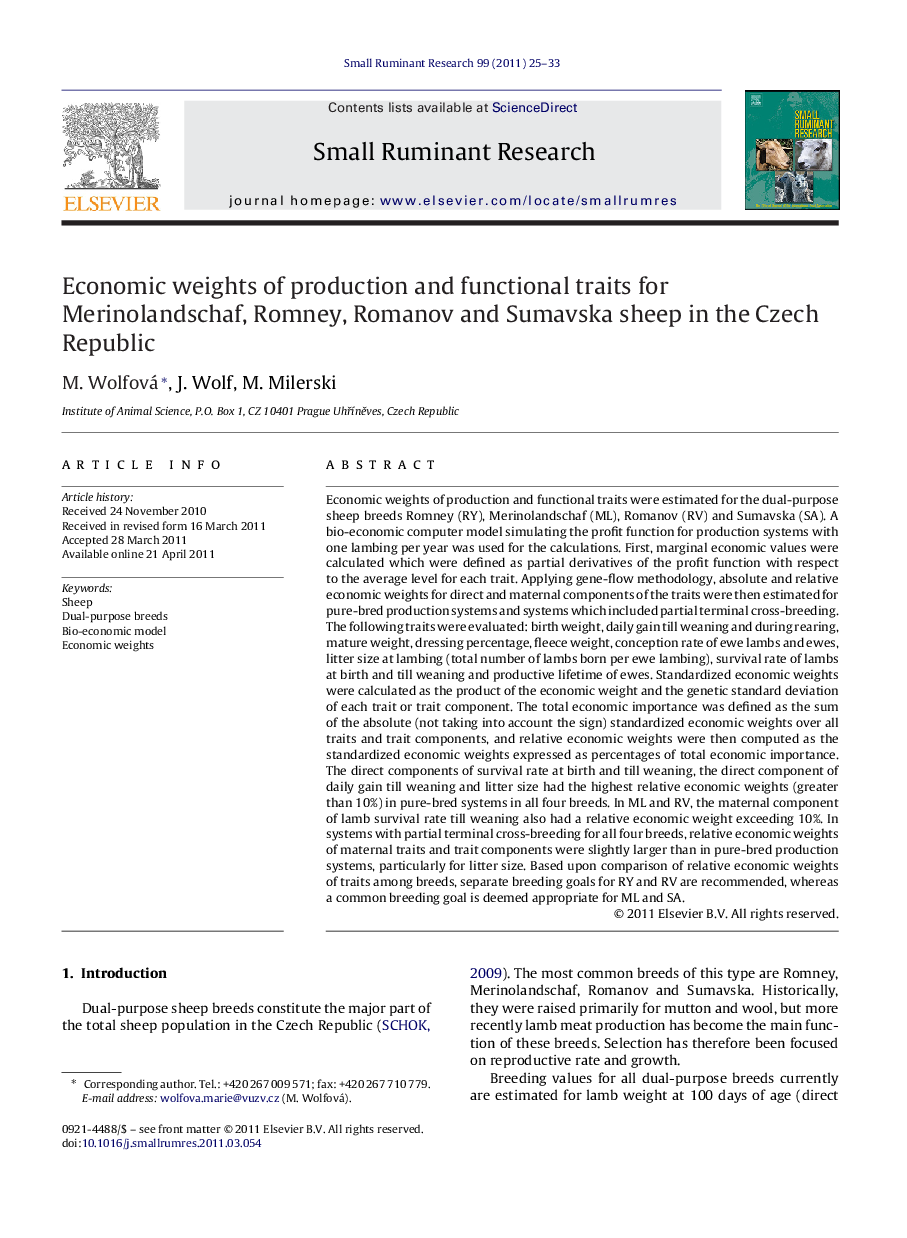| کد مقاله | کد نشریه | سال انتشار | مقاله انگلیسی | نسخه تمام متن |
|---|---|---|---|---|
| 2457397 | 1110712 | 2011 | 9 صفحه PDF | دانلود رایگان |

Economic weights of production and functional traits were estimated for the dual-purpose sheep breeds Romney (RY), Merinolandschaf (ML), Romanov (RV) and Sumavska (SA). A bio-economic computer model simulating the profit function for production systems with one lambing per year was used for the calculations. First, marginal economic values were calculated which were defined as partial derivatives of the profit function with respect to the average level for each trait. Applying gene-flow methodology, absolute and relative economic weights for direct and maternal components of the traits were then estimated for pure-bred production systems and systems which included partial terminal cross-breeding. The following traits were evaluated: birth weight, daily gain till weaning and during rearing, mature weight, dressing percentage, fleece weight, conception rate of ewe lambs and ewes, litter size at lambing (total number of lambs born per ewe lambing), survival rate of lambs at birth and till weaning and productive lifetime of ewes. Standardized economic weights were calculated as the product of the economic weight and the genetic standard deviation of each trait or trait component. The total economic importance was defined as the sum of the absolute (not taking into account the sign) standardized economic weights over all traits and trait components, and relative economic weights were then computed as the standardized economic weights expressed as percentages of total economic importance. The direct components of survival rate at birth and till weaning, the direct component of daily gain till weaning and litter size had the highest relative economic weights (greater than 10%) in pure-bred systems in all four breeds. In ML and RV, the maternal component of lamb survival rate till weaning also had a relative economic weight exceeding 10%. In systems with partial terminal cross-breeding for all four breeds, relative economic weights of maternal traits and trait components were slightly larger than in pure-bred production systems, particularly for litter size. Based upon comparison of relative economic weights of traits among breeds, separate breeding goals for RY and RV are recommended, whereas a common breeding goal is deemed appropriate for ML and SA.
Journal: Small Ruminant Research - Volume 99, Issue 1, July 2011, Pages 25–33